trees
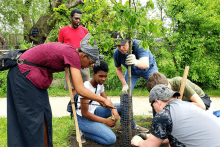
In a Cleveland neighborhood, a set of 25 young trees line the space between the sidewalk and the road. The trees were planted by volunteers from Calvary Reformed Church in 2019, an example of the types of actions that churches can take to address rising heat in their neighborhoods. Now, thanks to 2022’s Inflation Reduction Act, nearly $1 billion will fund similar projects across the nation.
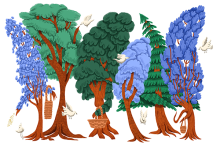
It’s silly to call trees people
saying firs waving limbs are yelling at wind,
and cedars so tall their tops disappear
have heads in the clouds,
or to sympathize with plants below
ripening berries, sending out seeds
on wings while struggling for scraps of light,
and then feeding survivors of fires.
Silly. Better listen. Memorial
services have their ways of bringing up
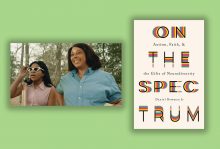
Tree Rings
The three short films in The Trees Remember series span 60 years and feature Black women in the outdoors, reframing narrow historical narratives of who has access to nature. Directed by Angela Tucker, they portray memory, relationships, and belonging in the outdoors. TuckerGurl Inc.
Unique Pathways
On the Spectrum: Autism, Faith, and the Gifts of Neurodiversity chronicles author Daniel Bowman Jr.’s life as an autistic Christian, starting from his unexpected diagnosis at 35. Illuminating the ways that neurodiversity enriches us all, this book debunks misconceptions and offers hope. Brazos Press.
I GREW UP IN RURAL IRELAND in the 1950s in a world surrounded by trees.
Close to my home, a ribbon of horse chestnuts lined both sides of the road. Each summer their intertwining canopies shut out the light, which gave the road its name—the dark road. In the fields around our house there were stands of oak, birch, elm, and sycamore. About 40 yards to the south and west, my father planted a shelter belt of Leylandii. We had different varieties of apple trees in the orchard, and two pear trees.
In 1962, just as the Second Vatican Council was beginning, I entered St. Columban’s seminary to be a priest. The seminary was located on a large estate called Dowdstown in County Meath. More than 150 acres were covered in woodlands full of indigenous trees such as oak, hazel, holly, ash, Scotch pine, willow, elm, and rowan. There were also exotic species, including a number of the sturdy cedars of Lebanon, a variety of cherry trees, and even a few California redwoods. The folklore in the area was that the trees had been planted in the 1820s by Gen. Robert Taylor, who had fought alongside Wellington at the Battle of Waterloo.
Trees are the dominant life form on land—and the longest-lived creatures on earth. During my seven years in seminary, while studying philosophy, theology, spirituality, and scripture, we never once looked to the natural world or trees for insight into our relationship with God, other human beings, or other species. And there is so much to learn! Sadly, theology and scripture presentations were isolated almost exclusively to the divine-human relationship, with little consideration given to the rest of creation.
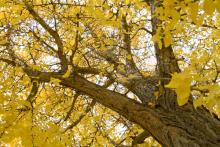
I had a happy childhood, with few moments of true anguish. One that I will always remember, though, is when they cut down the tree on Euclid Street.
Throughout my early years, I would often take walks with my parents down this street, stopping to play on this tree’s bulging roots and hug its large trunk. On this particular weekday, my favorite tree had been replaced with a stump and some sawdust due to the risk of it falling over and taking out all the power lines its branches had engulfed. My four-year-old self was in shock.
I spent the afternoon wailing, to the dismay of my parents and the neighbor who came over for a play date. To this day, when I walk down Euclid Street and see pieces of the branches still hanging on to the power lines, I remember what it felt like to lose my first friend.
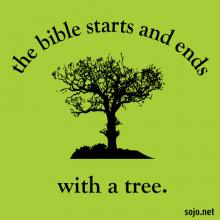
Whether churchgoers realize it or not, the trees in their churchyards have religious roots.
Those tall, thin-branched trees on the corner of this city's Episcopal Church Center of Utah, Purple Robe Black Locusts, were probably named after a biblical reference to John the Baptist eating locusts and honey.
Nearby, the crab apple tree just outside the Episcopal Cathedral Church of St. Mark produces a small, sour fruit used by 15th-century monks to treat diarrhea, dysentery, and gallstones.
And the flowers of a nearby dogwood tend to bloom around Easter.
“My hope,” said University of Utah biology professor Nalini Nadkarni, “is [worshippers] will realize that nature and trees are as much a part of their sacred ground and worthy of reverence as what goes on inside a cathedral or church.”